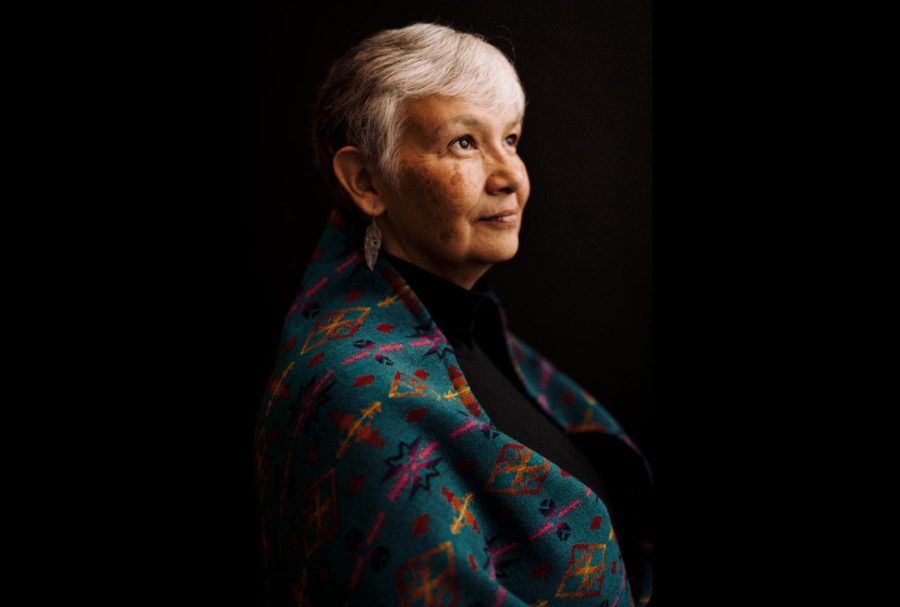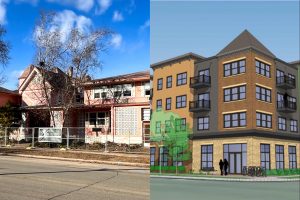IOPA hosts transracial adoptee and Native American author Susan Devan Harness
April 9, 2021
On Tuesday evening the Office of Multicultural Student Services and the Intercultural Organization Promoting Education (IOPA) welcomed American Indian author and transracial adoptee Susan Devan Harness as a keynote guest speaker for their week-long event, ‘Loving Week.’
Harness is most well known for her book, “Bitterroot: A Memoir of Transracial Adoption,” which has caused Harness to be invited to both national and international events to speak and share her experiences. Harness has also recently appeared in a TEDxMileHigh talk about transracial adoption and has won multiple awards for Bitterroot.
According to Harness’s website, “[Bitterroot] is a sweeping examination of her life that explores the uneasy intersection of race, history and the brutal government American Indian policies that affect the lives of her and her families.” The talk, which was given via Zoom, was free to anyone who pre-registered for the event and was followed by a Q&A session with nearly 40 attendees.
IOPA officers introduced the meeting by explaining the purpose of the student organization, followed by a reading and explanation of NASA’s Indigenous Land Statement. According to IOPA co-chair Jaiya Edwards, “IOPA is a student organization for students who are biracial or adopted,” she said. “We build a community for biracial and adopted students and support each other in that way.”
Edwards said, “Loving day is the celebration of the Loving v. Virginia [U.S. Supreme Court] case, which legalized interracial marriage on June 12, 1967.”
“Because we’re not in school in June, we chose a week to celebrate the case and all bi or multiracial individuals and transracially adopted individuals,” said IOPA treasurer Maya Al-Saeed.
Keynote speaker, Harness, then opened with her thoughts on Virginia v. Loving as well as a brief introduction of her life and what led her to her advocacy and humanitarianism. Harness said, “I think the commemoration of June 12, 1967, when the U.S. Supreme Court struck down the bands of interracial marriage in the Virginia v. Loving case is absolutely required as far as a social memory.”
Harness was born to a single mother on a Flathead Indian Reservation. Harness described how the hospital she was born in has now been demolished and replaced by office buildings, and how she came to be taken out of her home and placed in foster care at the age of two. “It became clear that she wasn’t able to be a mom. She would leave for days or weeks or months at a time, and we would be left in the care of family or siblings.”
Harness was eventually left in the care of her six-year-old sister. “When social services came into the picture, I had severely infected mosquito bites, infected diaper rash…I was 18 months of age at that point, and they couldn’t determine when I’d last eaten.” Harness was separated from her siblings and placed in foster care and did not see them again until she reached her 30s. Harness was adopted by a white couple who lived in Montana. “Montana is probably second only to Alaska in terms of being racist towards American Indians.”
Harness shared several stories of growing up as an American Indian adoptee, and the palpable difference between being with her white friends and parents and being by herself. She described being followed in stores, being verbally harassed and discriminated against, and being “othered.” She said, “Growing up under that kind of pressure, you learn to be quiet. If you’re not quiet, you’ll make waves and that means something will blow back on you. Sometimes that’s violence, or that’s anger, or that’s something shameful.”
Harness described how she didn’t start to question the way she grew up and how it impacted her until her 40s, which is when she began heavily researching American Indian discrimination and went on to write Bitterroot.
Harness used a metaphor of a skyscraper and a four-story, brick building to describe racism in America. The people in power live at the very top, and they have everything. They have money, power, control, jobs, connections; essentially, they have social capital. As you go down, Harness described, there are less and less social capital and less and less power and money. You also see more representation and more diversity as you go down the levels. Then, eventually, you reach the bottom and leave the building, and across the street is the brick building, which is where Harness believes American Indians are represented in the metaphor.
Harness then described how, as a transracial adoptee, she feels as if she doesn’t belong in either building. She doesn’t have the cultural experience of being American Indian because she grew up in a white household, and yet she has faced all the discrimination. “We [transracial adoptees or biracial people] find ourselves at an area in between. We are between these two structures, and it’s very difficult for us to get out of or into those. I see the world from that in-between place, which might seem like a deficit but has turned into a positive thing for me.”
Harness described how she has used that perspective to learn and write and spread awareness. Harness then led a conversation about ways in which American Indians have historically been oppressed, and how that oppression has evolved to be less overt to the untrained eye. “We have been othered, we have been moved, we have been everything.” She discussed the Dakota Access Pipeline, ethnicity and race surveys which lack an option for First Nation people, the ways in which indigenous people are portrayed in media or art, and the ways in which native women are hypersexualized and objectified.
She also discussed violence against native women, “Indigenous women are twice as likely to experience violence and are highly likely to experience murder with that violence.” She then referenced a famous artwork titled, “The End of the Trail,” which depicts an American Indian slumped over his own slumping horse, while the wind batters them. “That whole thing says the Indians are dead…that’s an image of invisibility. It’s called the End of the Trail, after all.”
Harness concluded with a call to action, advocating for more awareness and openness about the ways in which Native Americans experience discrimination. “We need to have conversations about what being American Indian means in this country.” For more information about Susan Devan Harness, readers may visit her website. For info about IOPA, readers may visit their Instagram, @uwl.iopa, or their MyOrgs page.






